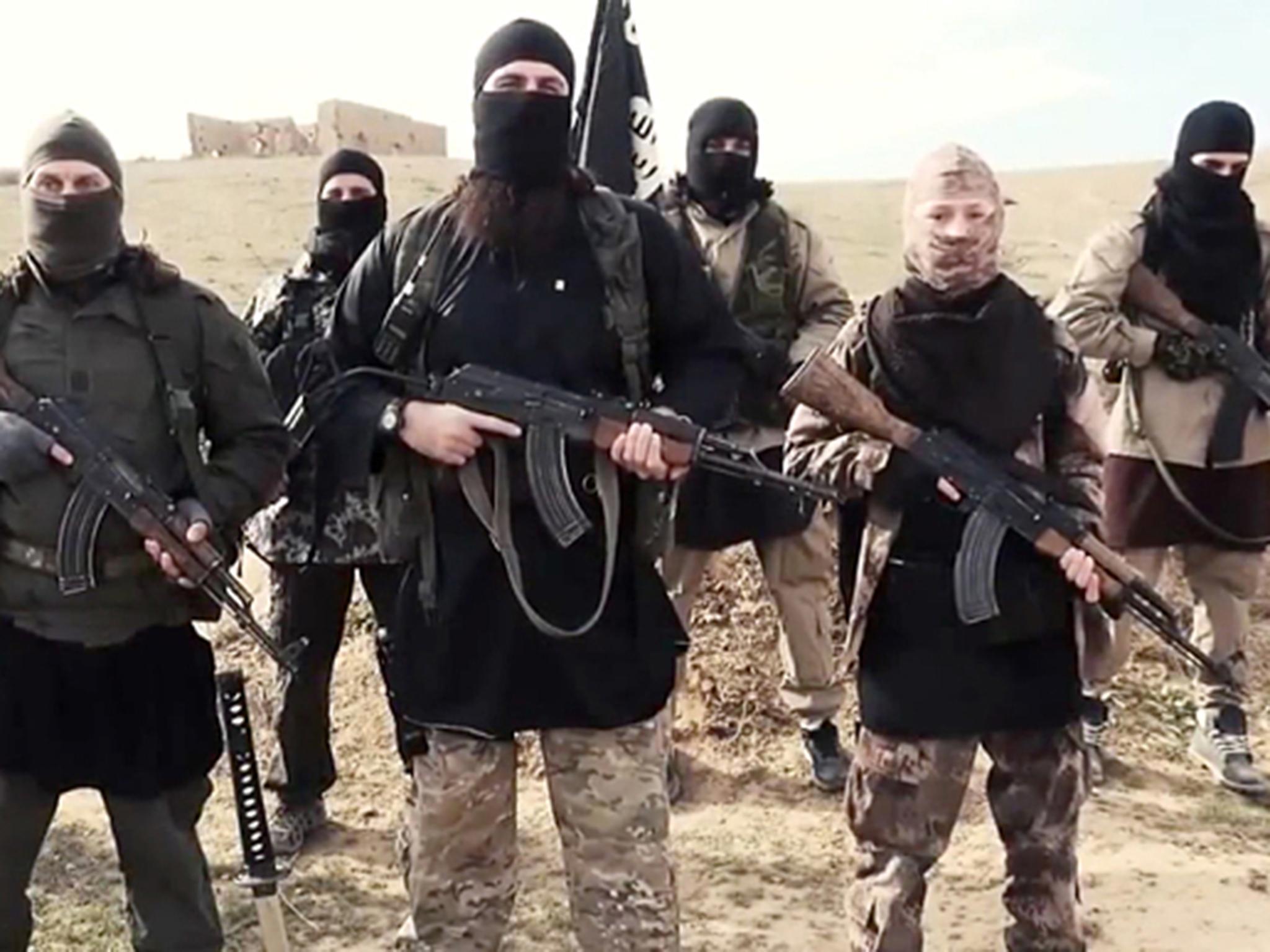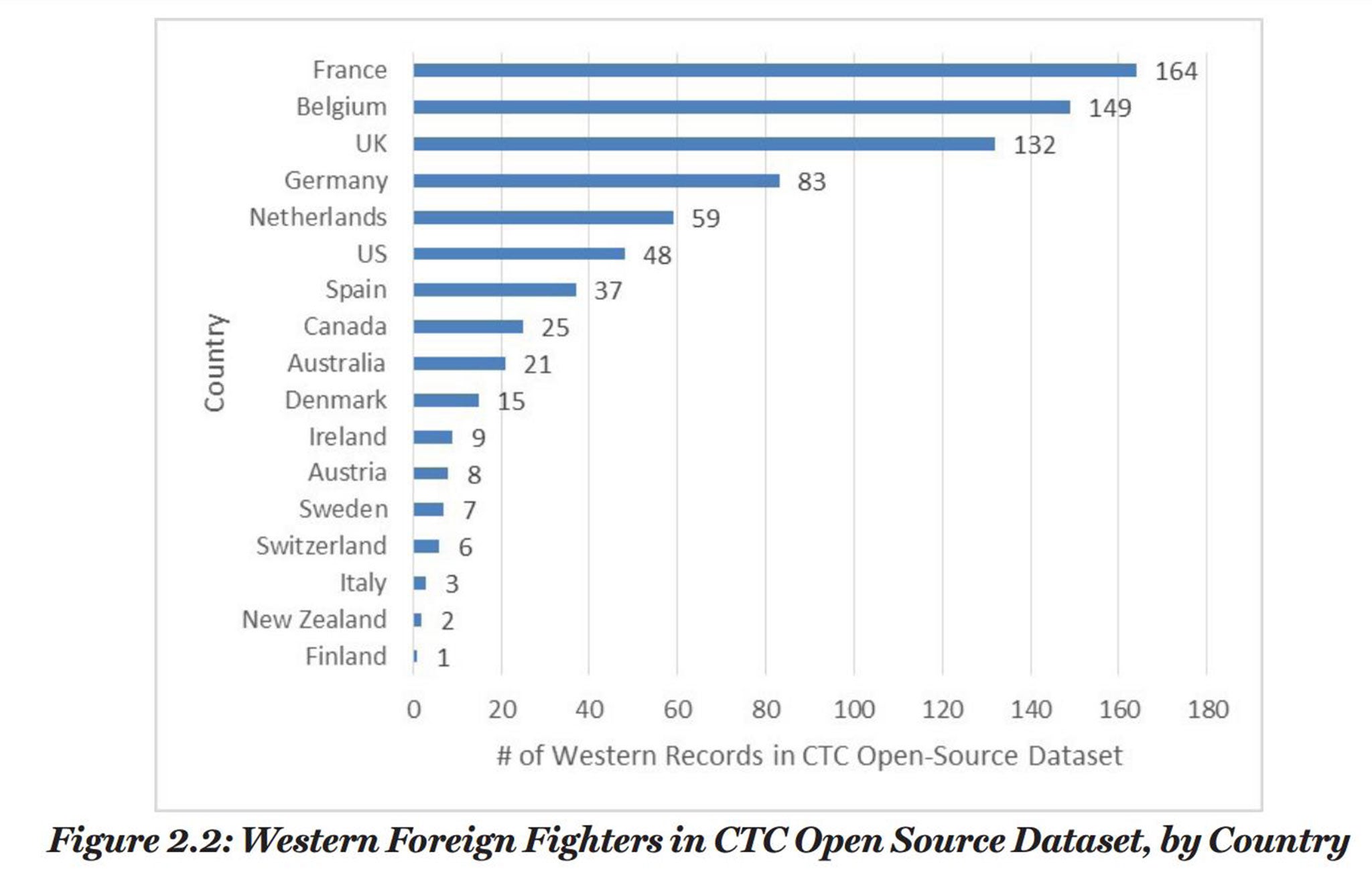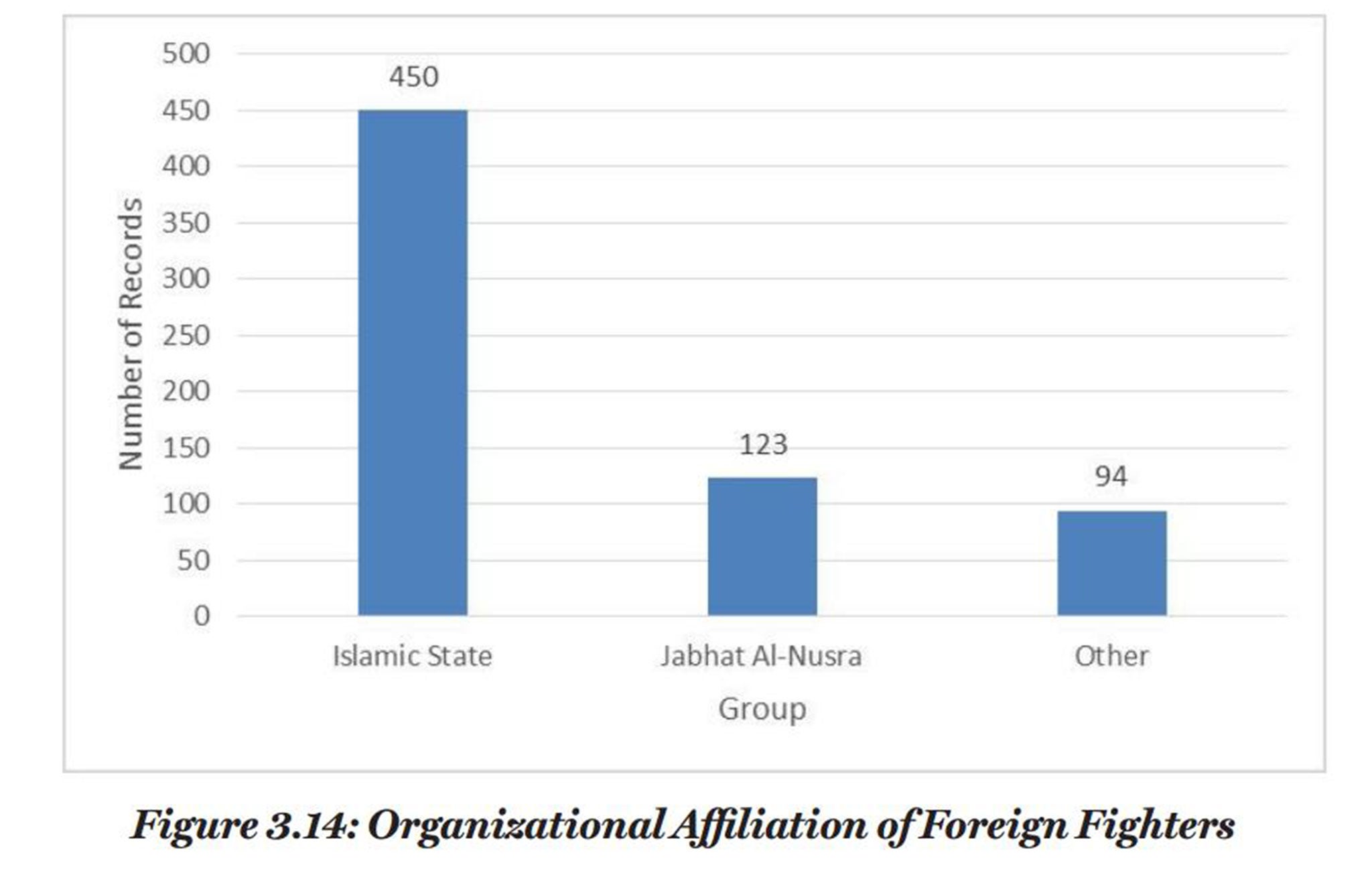Isis: Islam is 'not strongest factor' behind foreign fighters joining extremist groups in Syria and Iraq – report
Military analysts say militant groups can prefer recruits who won’t challenge ideology

Religion is not the strongest driving force behind thousands of foreign fighters joining Isis and other terrorist groups in Iraq and Syria, a report by US military researchers has found.
A new study by the Combating Terrorism Center (CTC) at West Point revealed that the vast majority of almost 1,200 militants surveyed had no formal religious education and had not adhered to Islam for their entire lives.
Extremist groups may prefer such recruits because they are “less capable of critically scrutinising the jihadi narrative and ideology” and instead adhere totally to their chosen organisation’s violent and reductive interpretation of Islam.

Analysts said many foreign fighters travelling from the West are attracted to jihadi groups through cultural and political identities rather than Islam itself, which is moved into a “secondary role”.
“The ability of jihadi groups to recruit foreign fighters is thus based on creating a narrative that is focused on the ongoing deprivation of Muslims, both in specific Western polities, as well as in the international arena,” said the CTC’s report.
The analysis, carried out at the United States Military Academy, corresponded with revelations from a trove of Isis entry forms leaked earlier this year, where the majority of those joining the so-called Islamic State listed their Sharia knowledge as “basic”.
At the height of Isis’s drive for foot soldiers in 2013 and 2014, recruits reportedly included two Britons who ordered The Koran for Dummies and Islam for Dummies from Amazon to prepare for jihad abroad.
Major Islamic organisations around the world have condemned Isis and ripped it's theological claims to shreds. Among them is the Muslim Council of Britain, which issued a joint statement from mosques across the UK condemning the group's “deceitful” actions as “far from the teachings of Islam”.
While government-led strategies across Europe and the US have encouraged mosques to take a lead in fighting radicalisation, the CTC found that religious figures played only a “minimal role” and fighters were isolated from Muslim communities at home, instead being radicalised by jihadi recruiters, online or by friends.
The CTC analysed the lives – and deaths – of foreign fighters who attempted to join militant groups in Syria and Iraq from 2011 to 2015, from France, Belgium, the UK, Germany the Netherlands and 25 other countries.
“Foreign fighters are not just engaging in a significant amount of fighting, but they are also doing a large amount of dying,” said the report.

At least 74 per cent of those surveyed had been killed in action, although experts warned the number could be skewed by the fact identities of dead foreign fighters are more likely to be in the public domain than those still in action.
Three-quarters of British fighters in the sample had been killed, with the death rate standing at 66 per cent for Isis and 77 per cent for al-Qaeda’s affiliate Jabhat al-Nusra, which has now renamed itself as Jabhat Fateh al-Sham after supposedly splitting from its parent organisation.
Death tolls in Syria and Iraq are almost impossible to confirm, with the absence of impartial authorities on the ground and warring propaganda messages from groups battling for control.
In May this year, the UK-based Syrian Observatory for Human Rights (SOHR) estimated that more than 47,000 foreigners had been killed fighting for anti-Assad factions, including Isis and Jabhat al-Nusra – surpassing the total figure believed to have travelled to the country by the US government.
The Pentagon estimates that its air strikes alone have killed 45,000 Isis fighters, including foreigners and locals.
The CTC found there was no single “profile” for the extremists, although most were aged in their 20s, were unemployed or students and had an immigrant background.
Previous studies have revealed that many also have a criminal past, such as involvement in minor gang crime, which can be preyed on by recruiters presenting a “redemption narrative” to exploit skills valuable to undercover networks.
Westerners are used in a variety of roles depending on their experience, the CTC said, often being sent to terrorist training camps upon arrival in the region before being deployed as soldiers, suicide bombers, leaders or support personnel.
Foreign fighters can also be valuable propaganda tools, such as the British Isis fighter Mohammed Emwazi, who became known as Jihadi John after appearing in a series of gory execution videos showing the murder of James Foley and other hostages.
Isis frequently uses European recruits for videos aiming to incite attacks in their home countries and there is growing concern over the potential use of foreign fighters who return, complete with weapons training and battlefield experience.
“For some, exposure to violence may serve to harden their belief in the organization on behalf of which they are working,” the CTC’s report said.
“For others, the brutal realities of the battlefield may be the first step in their disenchantment with an organisation.
“Wrestling with how to distinguish between returnees who are hardened as opposed to those who are disillusioned, as well as what to do in either case, is a challenge that will only grow larger as fighters return in greater numbers and governments struggle to respond.”
Among the Isis recruits who returned to Europe last year is Harry Sarfo, who grew up in the UK and travelled to join the group in Syria after meeting a radical preacher during a jail term for robbery.
Now in prison, he told The Independent said the stonings, beheadings, shootings, executions and use of child soldiers he witnessed drove him to flee the group after finding its ideology to be “un-Islamic”.
“My worst memory is of the execution of six men shot in the head by Kalashnikovs,” Sarfo recalled.
“The chopping off of a man’s hand and making him hold it with the other hand.

“The Islamic State is not just un-Islamic, it is inhuman. A blood-related brother killed his own brother on suspicion of being a spy. They gave him the order to kill him. It is friends killing friends.”
The CTC said only 10 per cent of the fighters they assessed had returned, with the risk of them being used in future terror operations rising the longer they stay in extremist-held territory.
Analysts warned that while an estimated 90 per cent of militants were arrested after arriving back in the West, others slip through the gaps and pose a diverse and deadly threat.
Trained Isis fighters were behind terror attacks at the Jewish Museum of Belgium in 2014, the 2015 Paris attacks and Brussels bombings earlier this year as well as several other plots, with the group’s propaganda inspiring “lone wolf” attacks such as the atrocity that killed more than 80 people in Nice.
“While the direct return and execution of attacks is an important concern, the data here has shown that is far from the only concern,” the CTC’s report concluded.
“Unfortunately, history would suggest that the flow of foreign fighters into Syria and Iraq is unlikely to be the last time individuals decide to travel long distances to take up arms in an ongoing conflict.”
Join our commenting forum
Join thought-provoking conversations, follow other Independent readers and see their replies
Comments